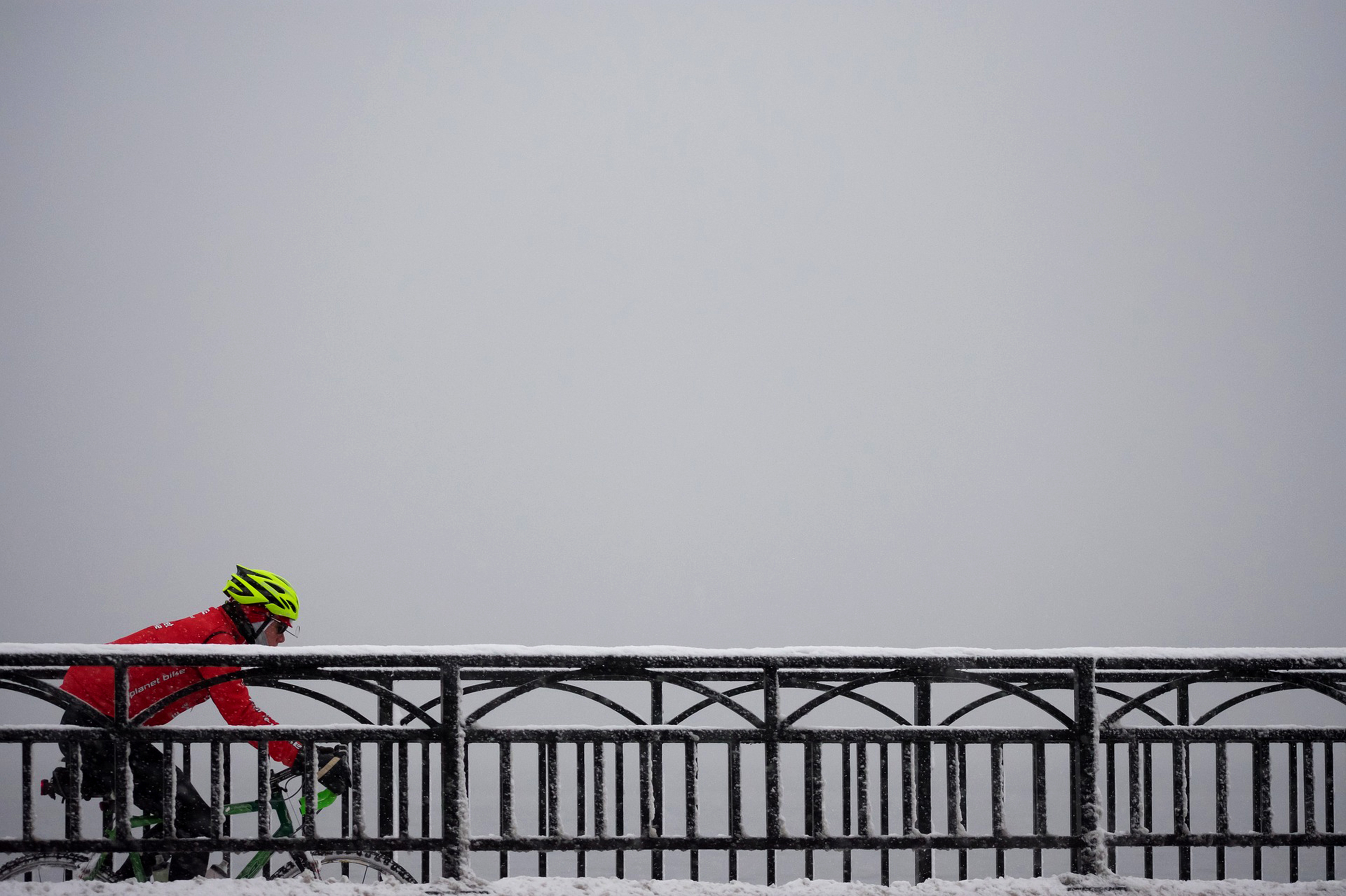-
Use winter tyres
Winter tyres are compulsory by law for cars during winter. This is not the case for bicycles. However, winter tyres are essential if you plan on taking on those treacherous snowy and icy bike roads. Not only will the winter tyres allow for better handling of the bike, but also for a much safer ride. If the cost of the tyres scare you (35+ eur), then you should at least get one for the front wheel, even if you don’t change the tyre of the back wheel.
-
Lock Oil
At freezing temperatures, it can become difficult – sometimes impossible – to open the lock to your bike. The moving parts will freeze and can ruin your day. All you need is a special blend of oil and solvents called “lukkosula” (lit. lock melt) in Finnish. You can buy lukkosula at any convenience store. This magic substance will not only defrost the inside of your lock, but will also protect it for some time against freezing again.
-
Avoid sharp turns and brake slowly
One of the hardest things to learn when riding a bike on snow or ice is unlearning to bike on dry pavement. Before making a turn, make sure to decelerate in advance and to make the turn broadly. The reason for this is that snow and ice provide much less friction than dry pavement. When you make a sharp turn, you are producing more force on the ground than when you make a broad turn. Thus in a sharp turn, the dry pavement can provide enough friction against the tyre to keep you up but the snow or ice cannot, causing your tyre to slip.
This is also the reason why you probably don’t want to brake suddenly, but rather taper your braking slowly over time. A sudden braking will create too much force on the snowy or icy ground and even if your wheels are not rotating, your whole bike (and yourself) will slip and keep going.
-
Wear a helmet
It might not be the most fashionable accessory, but a helmet is the best way to protect that precious head of yours. Even a relatively small fall can have devastating consequences to your noggin if you hit it against the ground. The last thing you want to take home from your time in Finland is a concussion. Be safe and wear a helmet, at least until you’re a pro at winter biking.
-
Choose clothing wisely
The “layers, layers, layers” rule applies here. Choose your layers properly: a base layer, a second layer, a third layer if necessary, and a windproof layer on top (e.g. ski pants and ski jacket). A beanie is also necessary to keep your ears and that head of yours toasty and protected. If you cannot stand the wind on your face, you might want to wear a scarf or facemask. As you bike, your body will get warm, really warm, even at -30 °C.
However, the two parts of your body that will likely remain colder are your feet and your hands. Thus, remember to give these two parts special attention: wear warm socks, winter shoes, and windproof mittens.


